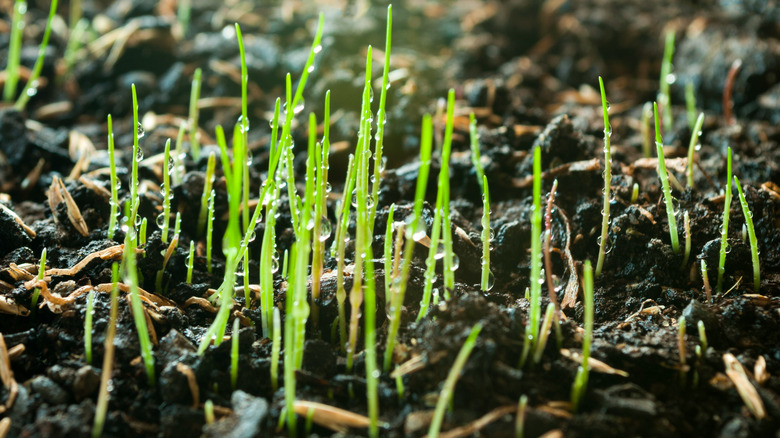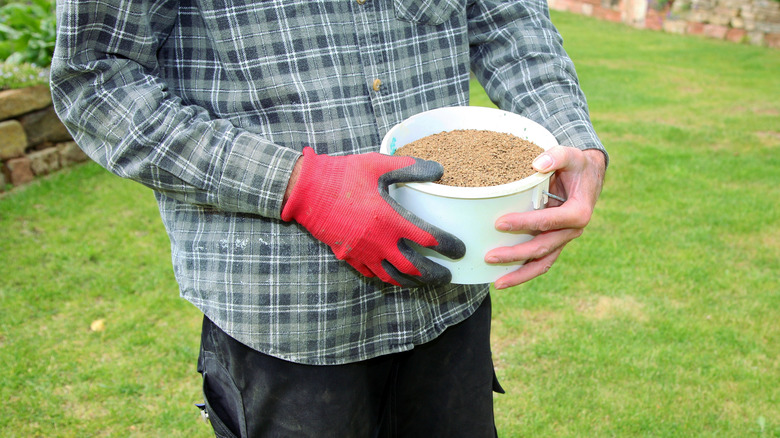You’ve been staring down a patchy lawn for what seems like an eternity, and you’re finally ready to make a move. However, your bag of grass seed has been sitting patiently in the garage for six months — or longer. We get it. Sometimes life gets busy, and we all lose track of home and garden projects, but when you’re finally ready to plant, are those grass seeds still any good? Chances are, if you’ve set your seeds aside for longer than five years, they’re probably no longer very effective.
That’s right — grass seeds can actually go bad and lose the ability to germinate over time. Of course, it’s hard to pinpoint exactly how long seeds from different species can last, and their lifespan depends on several factors like storage temperature, sunlight, moisture, and more. Here’s what you need to know about using old grass seeds and how to store your seeds so they’ll keep their efficacy.
Seeds lose their strength over time

As grass seeds age, some will expire before others. But don’t worry; this change doesn’t happen overnight. According to grass seed producers, seed germination rates will decline by about 10% for every year they’re kept in storage. Of course, germination rates also depend on the species of grass. Kentucky bluegrass, perennial ryegrass, and tall fescue seeds can lose about 50% viability after as little as three years, while 50% of creeping bentgrass seeds can stay good for in excess of five years. Other varieties, like orchardgrass, may only last 1 to 2 years in storage. Moreover, too low or too high seed moisture content, freezing temperatures, and high humidity can cause the seeds to lose their efficacy sooner.
How do you know if your old seeds are still good? There’s a simple way to test using sight, smell, and a paper towel trick. First, open the container and observe the seeds closely. If they look wet, moldy, or have a funky odor, they’ve probably gone bad and should be thrown away. If they seem fine, place ten grass seeds on a damp paper towel, fold in half, and leave in a warm area for ten days. If less than five seeds have sprouted, you’ll likely have less than 50% efficacy.
How to help grass seeds last longer

To store grass seeds correctly, first, you want to ensure they are kept in a cool, dry, and dark area. However, you don’t want to overdry the seeds either — the ideal seed moisture content is about 10 to 20%. Keeping the seeds in a sealed container like a plastic bag or bucket will prevent them from soaking up too much moisture from the air. The shed or garage isn’t a great place to store your grass seed because temperatures can easily exceed the ideal temperature, and even reach above 100 degrees, scorching and drying the seeds. Instead, store the seed indoors or in a container in the refrigerator between 32 and 60 degrees Fahrenheit.
For the best results, you’ll want to plant your fresh grass seeds as soon as possible. The best time of year to plant grass seed is in early spring or fall, when daytime temperatures are mild but you’ll have at least 30 days before the next big frost. Mark your calendar so you’ll remember to put those grass seeds to good use!



